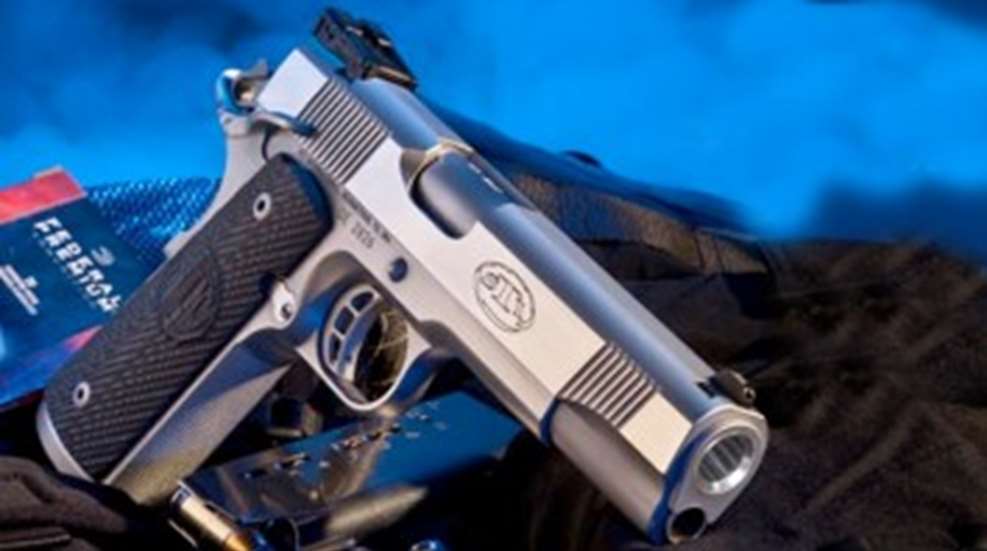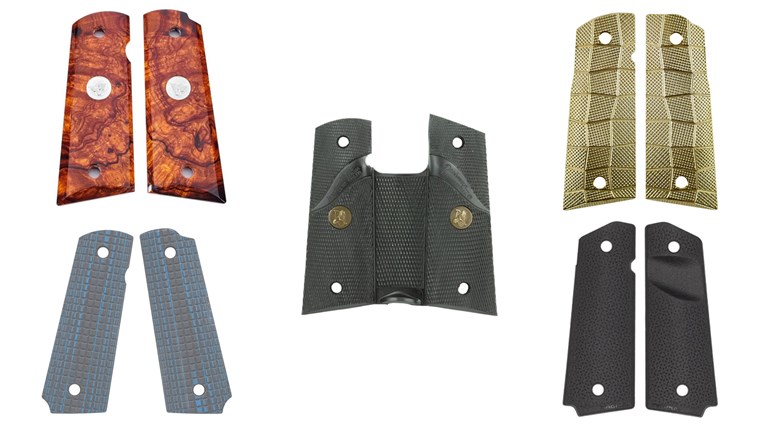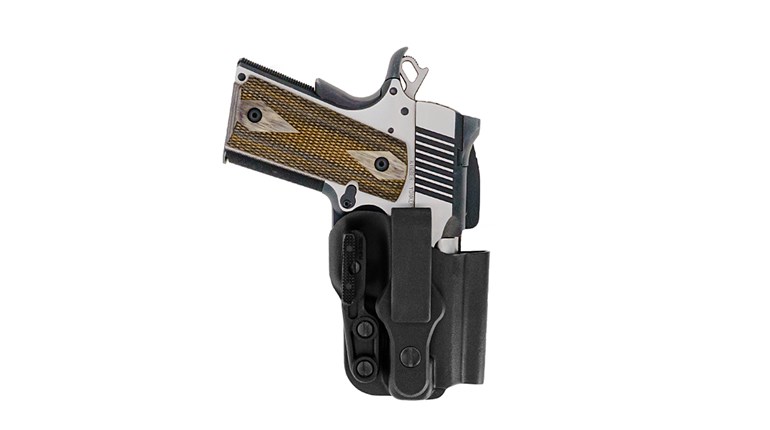
I could be described as a gun nut. Although I would prefer to be called a recreational firearms enthusiast, considering most of my waking hours are spent thinking about, working on or shooting guns, maybe the first description is not far off. The fact is I have been using and enjoying firearms for more than 40 years, and better than half that time has been in the pursuit of trophies. Not the above-the-mantle antlered kind, rather the kind collected within the crucible of competition. This is my focus and generally how I evaluate firearms.
However, I am not oblivious to the needs of armed confrontation. As a graduate of the Lethal Force Institute and a volunteer trainer for my region's Tactical Response Team (TRT), I have a fair handle on what is required in a firearm when put to the ultimate test. Rather than just give my opinion, though, I will make use of my association with the TRT and give you views from a member or two.
Any firearm I plan to use for practical shooting competition must meet certain criteria. First is reliability. If the gun doesn't finish, you can't win. Second is accuracy. If the gun can't hit, you can't win. Third is chemistry. If I can't hit with the gun, I lose. The first two are purely mechanical and the last is how I interface with the tool. Doesn't sound much different that what you might need to defend hearth and home, does it?
First ImpressionsOpening the STI Sentinel Premier's plastic hardcase revealed a handsome, hard-chromed, full-size Government-frame 1911. Starting outside and working in, this .45 ACP pistol is outfitted with fully adjustable Dawson Precision Tritium sights. The slide is created by removing from a billet of 4140 steel all materials not pertinent to the integrity of the finished product. The frame is precisely cut from a forging of 4140 steel. Both the frame and slide are machined in-house on state-of-the-art multi-axis machining centers, sporting names like HAAS, Fadal, Fanuc and Brother.
The fit and finish of this custom production pistol are first rate. The level of handwork is noticeable in the lack of sharp edges anywhere on the pistol—even the 30 lpi checkering on the frame and mainspring housing had been smoothed. Long training sessions are tough enough without my pistol cutting me somewhere. Holsters and cover garments last longer when the time is taken to neutralize these offending areas. While I was able to discern some movement between the hand-fit slide and frame, this quickly disappeared once I applied a dab of my favorite lubricant, Slide Glide.
The barrels produced by STI start life as 416 stainless steel forgings with some of the manufacturing burdens shared with an offsite contractor. All of STI's 1911 and 2011 pistols feature these high-quality spiral tubes, complete with integral feed ramps that fully support the case web and ensure reliable feeding. Even the best barrels only shoot as well as they are fit, and that operation is best left to human hands. It is obvious STI subscribes to this thinking, as the barrel fit on this single-stack .45 was superb.
While the fire-control components are rendered from billets of tool steel, the grip and ambidextrous thumb safeties are metal injection molded (MIM) parts. Being a southpaw, I was happy to see the starboard control resting under my thumb. Operating the safety from my side of the gun resulted in a positive "snick-on-snick-off" that can only be produced through hand fitting. Springs are manufactured to specification by an outside vendor. No single firearm manufacturer creates all parts "in-house," but STI certainly maintains the lion's share. How else could it put this much quality into your hands at such a reasonable price?
The final interface with any gun is the trigger, and while not perfect, it was predictable. The trigger suffers from a minor "tick" on initial take-up that did not go away during testing. The final release weight of 31⁄4 pounds is but one part of the story. To shoot my best, I want predictable repeatability. Yes, predicable. I know of the story of the "surprise break," but speaking as a card-carrying master in several shooting disciplines, I need to know exactly when I release the projectile. Other points of view can and do differ, and that's just fine.
Speaking of DetailSTI Marketing Director Rabbit Boyett was rightfully proud of the products produced by the firm and was a great source of information. I asked Boyett straight up what the term "custom production" means to the crew at STI.
"The difference is the level of attention to detail the firearm is built with," he said. "We are not a mass-production assembly house where guns are just assembled. Our guns are hand-fit in a production environment. Our slide-to-frame fits are measured and fit individually, they just don't slide together. Our fire-control components and safeties are hand-fit and stoned for the highest quality and function. We leave nothing to chance. As an employee-owned company, it is an incredibly personal thing to us to ensure that each and every pistol produced lives up to our highest standards." Boyett and the folks at STI are obviously passionate about building high-quality guns.
On to the ShootingI am not fond of shooting groups other than those I can produce offhand, but mechanical accuracy is an important tool in evaluating a new handgun. Group shooting was conducted outdoors at 25 yards with the pistol handheld over sandbags. In total, I sent 120 rounds of Federal American Eagle 230-grain ball, Federal 230-grain Match ball and my practice 230-grainers downrange, a magazine (8 rounds) at a time. The combined average of these 120 rounds was 21⁄4 inches. The Sentinel Premier really wanted to shoot the match ball, with several eight-shot groups near 11⁄2 inches.
Range day two began cold and wet. On tap this day was my least/most favorite get-to-know-a-gun drill: the Bianchi Falling Plates. The longtime king of practical shooting, Rob Leatham, once told a small gathering of gunwriters, "Anyone who could run the real deal Bianchi Falling Plate drill from the standing position at all distances and drop [miss] less than eight plates is a good shooter. Less than four plates is a stud." I have been working toward stud-dom ever since.
The DrillThe target arrangement for this course of fire is a regulation Bianchi Plate Rack. Mine (manufactured by MGM Targets) consists of six 8-inch diameter round steel plates spaced 20 inches apart center-to-center.
The shooter starts facing the plates with the gun loaded and holstered, with wrists above shoulders. On the start signal, he draws and engages each plate with one shot each within the time limit: 10 yards, 6 seconds; 15 yards, 7 seconds; 20 yards, 8 seconds; 25 yards, 9 seconds. Six shots per string, two strings shot at each distance making the total number of shots fired for this drill 48.
I ran this drill back-to-back six times with several missed plates on each run. My first run (shot cold without a warm-up) was a 44. I followed that with a dismal 41 and then a run of 43, another 44, and a close-but-no-cigar 46, ending with a caliber appropriate 45. Considering that this year I have only shot a few "clean runs" with my personal guns, all this STI pistol needs to hit 48 is a better pilot.The next drill, El Presidente, is a benchmark for competitors. It was designed by Col. Jeff Cooper in the 1970s as means to test one's draw, reload, target-to-target transition and follow-through, all in one short drill.
Back in the day, you were hot if you could get all your hits in less than 10 seconds. Today, using guns exactly like the Sentinel Premier, a 100-percent score would take 51⁄2 seconds with all 12 rounds in the center.
Everything has to go just right for this drill to go well. Heel a shot, miss a draw or bobble a reload, and 5 seconds turns into 8.
I was pleased with my shooting for the six passes I made on the El Prez. With my best percentage being 91 percent, and my worst 82 percent, I averaged a master-level score of 87 percent, and that equates to all As in 6.38 seconds.
Day three was spent shooting with the commander of the Tactical Response Team, Sergeant Mike Williams, and one of the team's snipers, Officer Aaron Hintz. I have enjoyed many a range day with these guys, and they know a little something about shooting. We were met with an overcast 34-degree day for this final phase of testing. While I whined about the cold weather, the officers snapped up the Sentinel Premier, loaded a dozen mags and commenced to shoot.
As I sat back and listened to the nearly continuous gunfire, I made note of the chatter between the brother officers.
"I'll trade you straight across for my Glock. I'll even throw in a box of department ammo!"
"Wow, I think he needs one. He's shooting good."
"I already shoot it better than my duty gun."
"Headline: Career cop goes to jail for stealing this gun."
"The thing that matters is, would I carry it or not? I would."
"Twelve hundred rounds without being cleaned?...I want this gun!"
All these quips were welcome until I heard, "You're out of ammo Pat, but we're not!"Great, just great. Odds are I am already in trouble for the perceived mistreatment of this fine pistol. It received no love or attention other than lubricant during the three torrid days of testing. I fed it more when it was hot. I fired it faster getting it hotter. Left hand, right hand and even inverted, the gun just ran. Magazines dropped in the dirt were not cleaned, just refilled and shoved home. Now I have two crazed cops burning through an additional 450 rounds.
So, instead of reporting that this STI single-stack .45 went through 1,200 rounds without a single malfunction, I am compelled to testify that three failures were experienced during the course of 1,650 rounds being fired. The malfunctions (slide failing to lock back on the last round) were quickly traced to Officer Hintz's thumb resting on the slide release. As Sergeant Williams aptly put it, "That was not a gun problem." I can only agree.
I hope the guys at STI don't get too upset with my editor for handing me this assignment. You see, this once shiny new pistol is now showing some "character" with a nick here and maybe a wee scratch there. OK, maybe I was a little rough on the Sentinel Premier, but it seemed to like it. Besides, I accept full responsibility: it happened on my watch.





































